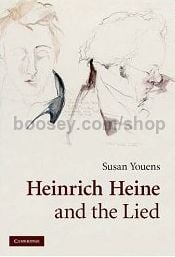Heinrich Heine & The Lied (hardback)
Heinrich Heine & The Lied (hardback)
* Estimated price converted from UK retail price
In Heine and the Lied Susan Youens asks why the poet Heinrich Heine (1797-1856) had such an impact on the history of nineteenth-century song. There are thousands of settings of Heine's youthful poetry, most of them composed before World War I. From the 1820s until the mid-century mark, Heine was the poet of choice for modernists who found in this new poetic language the stuff of cutting-edge tonal experiments. Schubert found Heine's early verse in his last years and set six poems to futuristic music before, so Youens proposes, turning away in revulsion. Heine's most famous poem, 'Die Loreley', was the proving ground for numerous novelties in the lied, in particular, Clara Schumann's and Liszt's. Heine's political ballads and Robert Schumann's settings are examined in the fourth chapter. There is cultural work afoot in such interpretations--a ripe subject for discussion.




